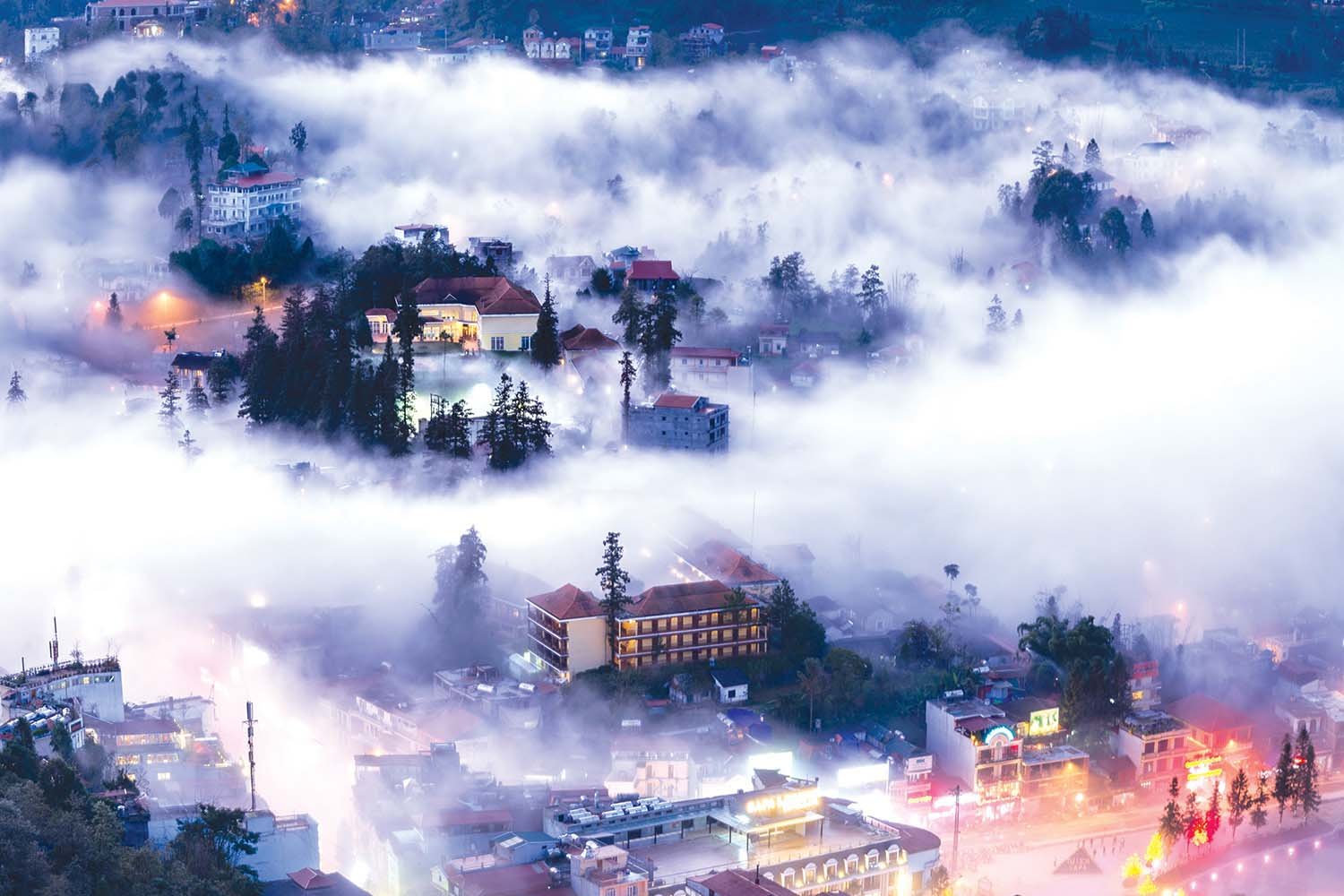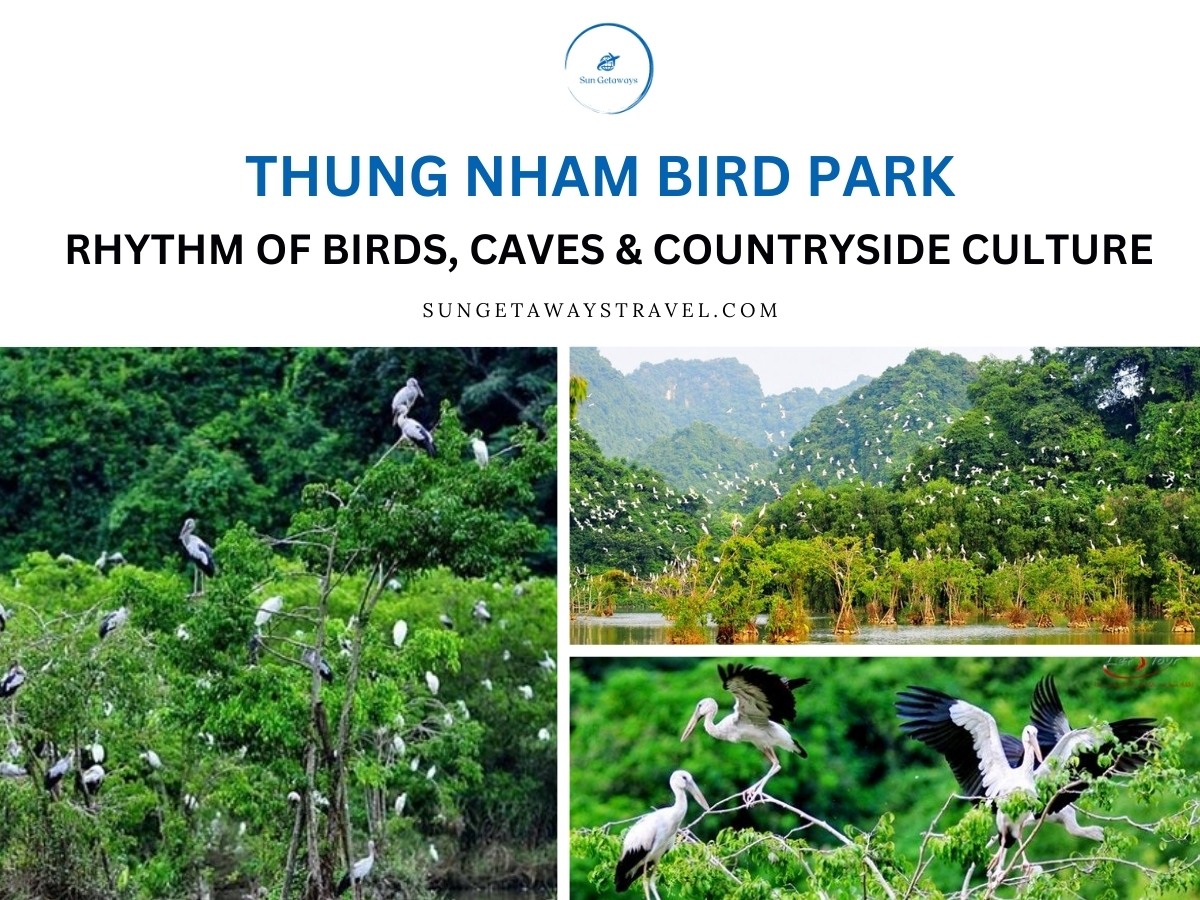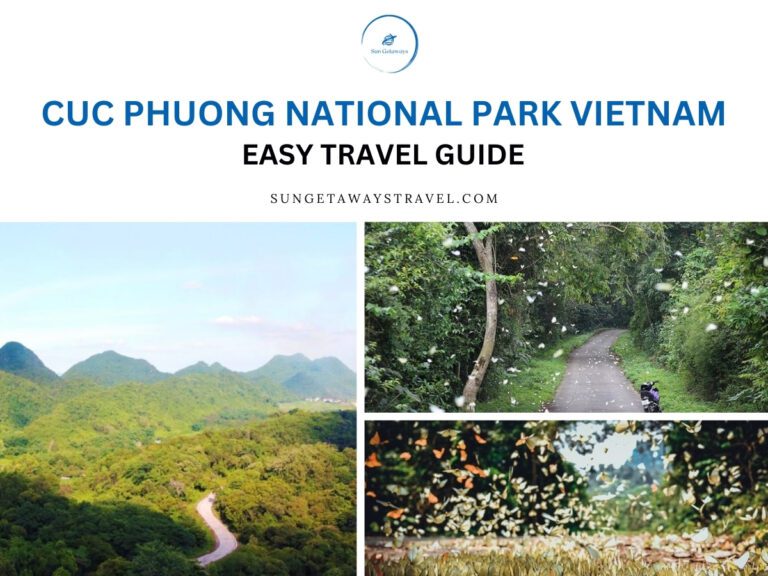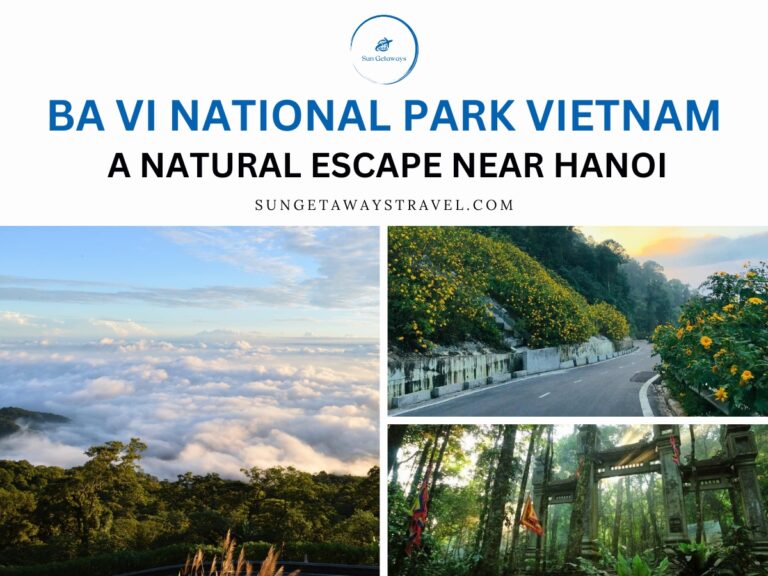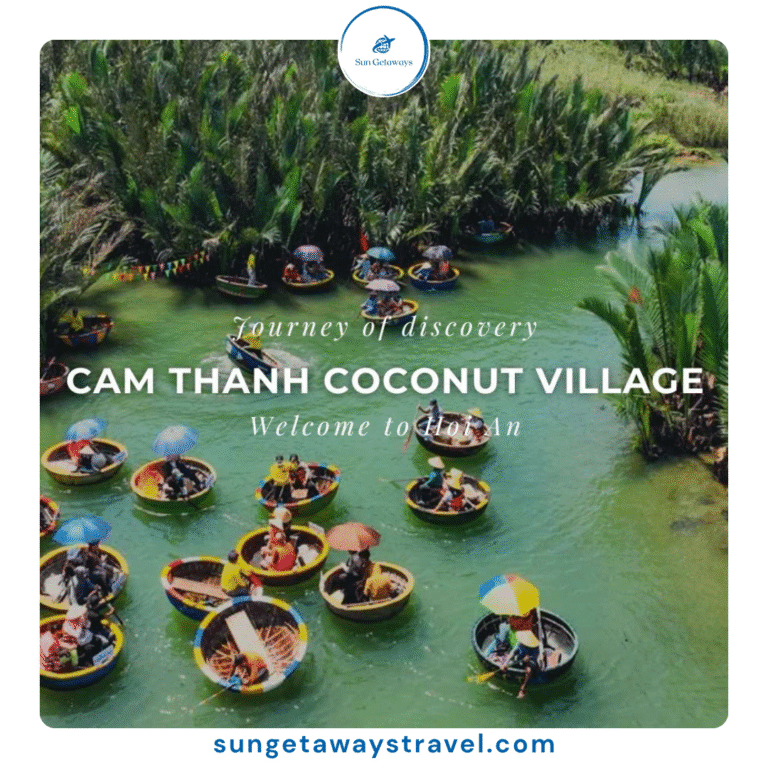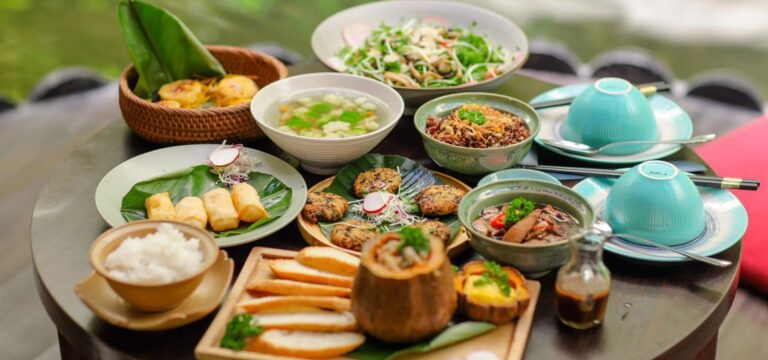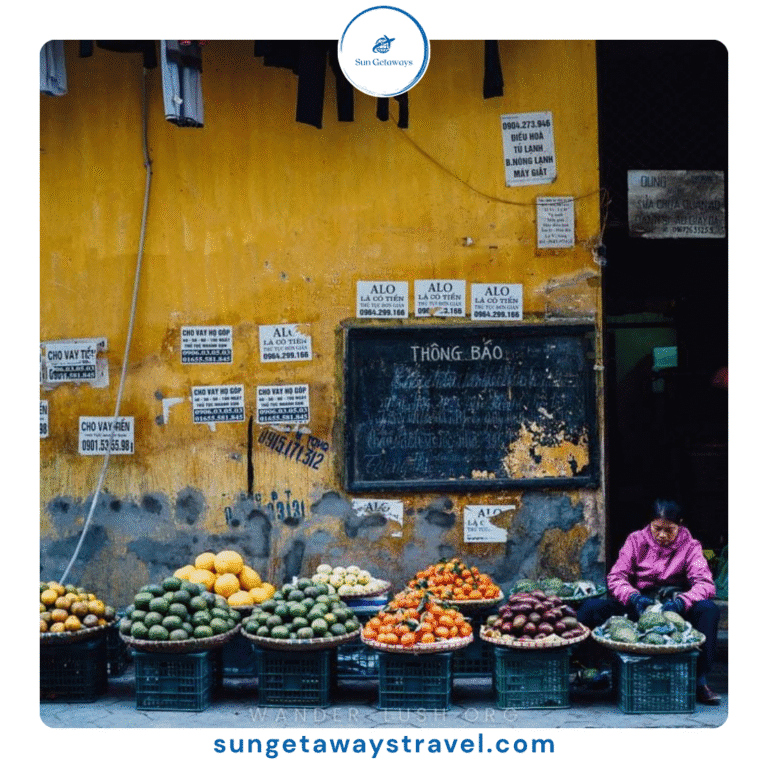Thung Nham Bird Park: Rhythm of Birds & Countryside Culture
 PhamDuong
PhamDuong “Nestled within the limestone valleys of Ninh Binh, Thung Nham Bird Park offers countless things to see at Thung Nham Bird Park—it is more than an ecological attraction, serving as a living portrait of Vietnam’s countryside where nature, spirituality, and village traditions intertwine. Each day, thousands of birds return to roost among flooded forests while caves echo with myths and sacred stories. As one of the best countryside destinations in Vietnam, it offers travelers a chance to witness authentic village life through farming, fishing, and faith practices passed down for generations.
Thung Nham Bird Park: History, Landscape & Biodiversity
Origins & Development
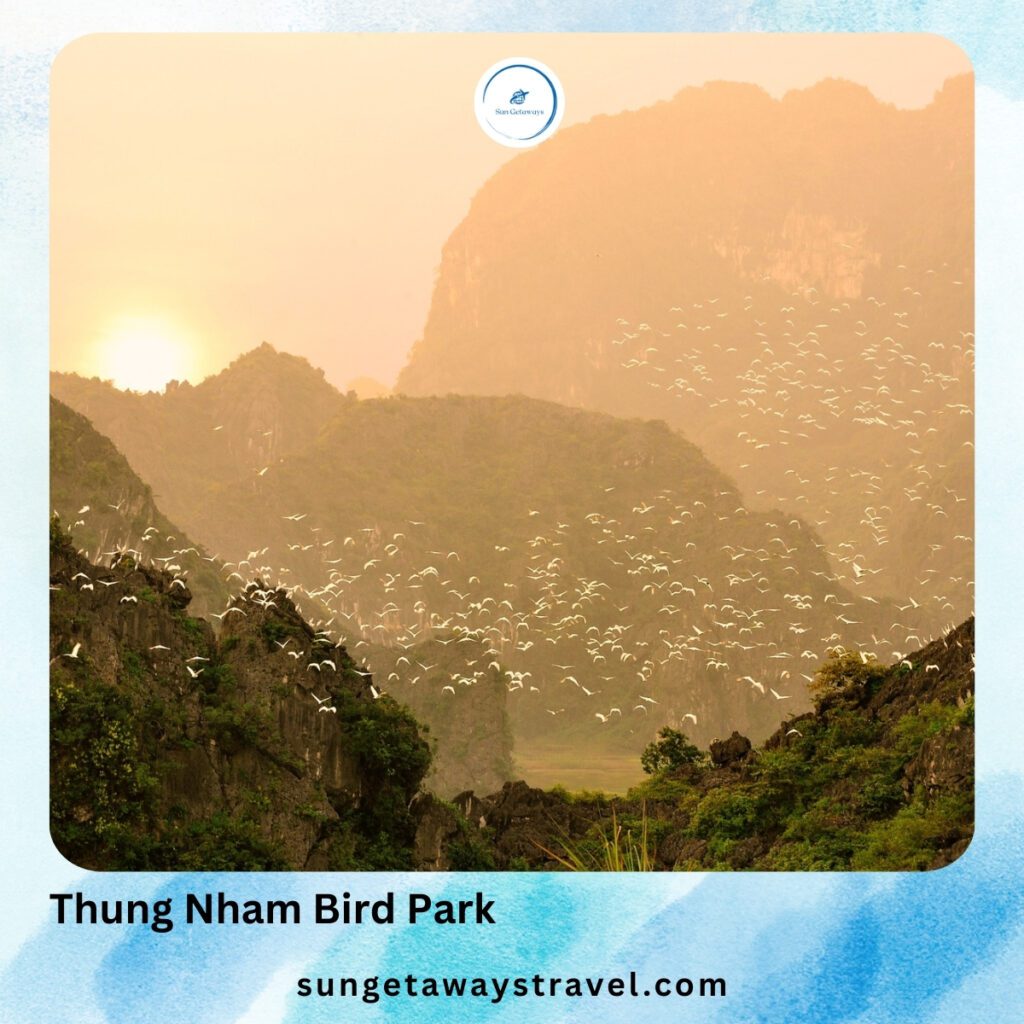

Located in the Hoa Lu district of Ninh Bình, Thung Nham Bird Park lies within a broader eco-tourism area that blends limestone karsts, wetlands, and cultural relics. The word Thung refers to a valley surrounded by mountains, while Nham denotes rocky cliffs. For centuries, this landscape was home to farmers and fishermen who respected its spiritual aura and protected its wildlife. In recent decades, conservation and community tourism projects transformed the valley into a sanctuary for both birds and cultural memory.
Landscape and Cave Systems in Thung Nham Bird Park
The park is surrounded by dramatic karst mountains, fertile lowlands, and interconnected waterways. Hidden within the limestone cliffs are caves that embody layers of folklore and geology:
- Bụt Cave (Fairy Cave): Stretching over 500 meters, Bụt Cave invites visitors into a mystical underground world. Its shimmering stalactites glisten like crystal chandeliers, reflecting off hidden pools that lie quietly beneath the surface. The cave’s serene atmosphere and natural formations evoke a sense of wonder, as if stepping into a realm touched by fairies and ancient legends.
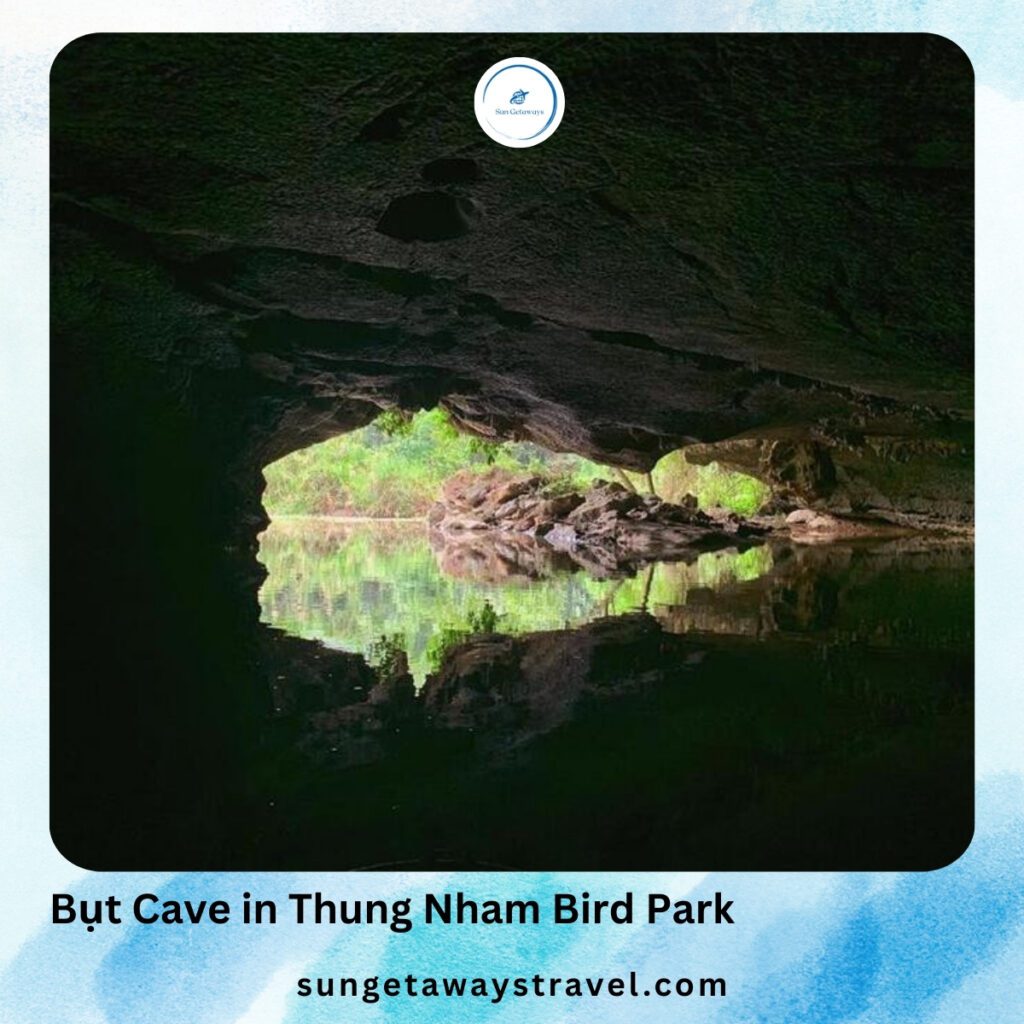

- Vai Giời Cave: To reach Vai Gioi Cave, one must ascend more than 400 rugged stone steps, each one a step closer to the sky. Inside, the cave opens into vast chambers once believed to be sacred grounds for celestial prayers. The air is cool and still, and the echoes of footsteps seem to whisper stories of spiritual rituals and ancient devotion.
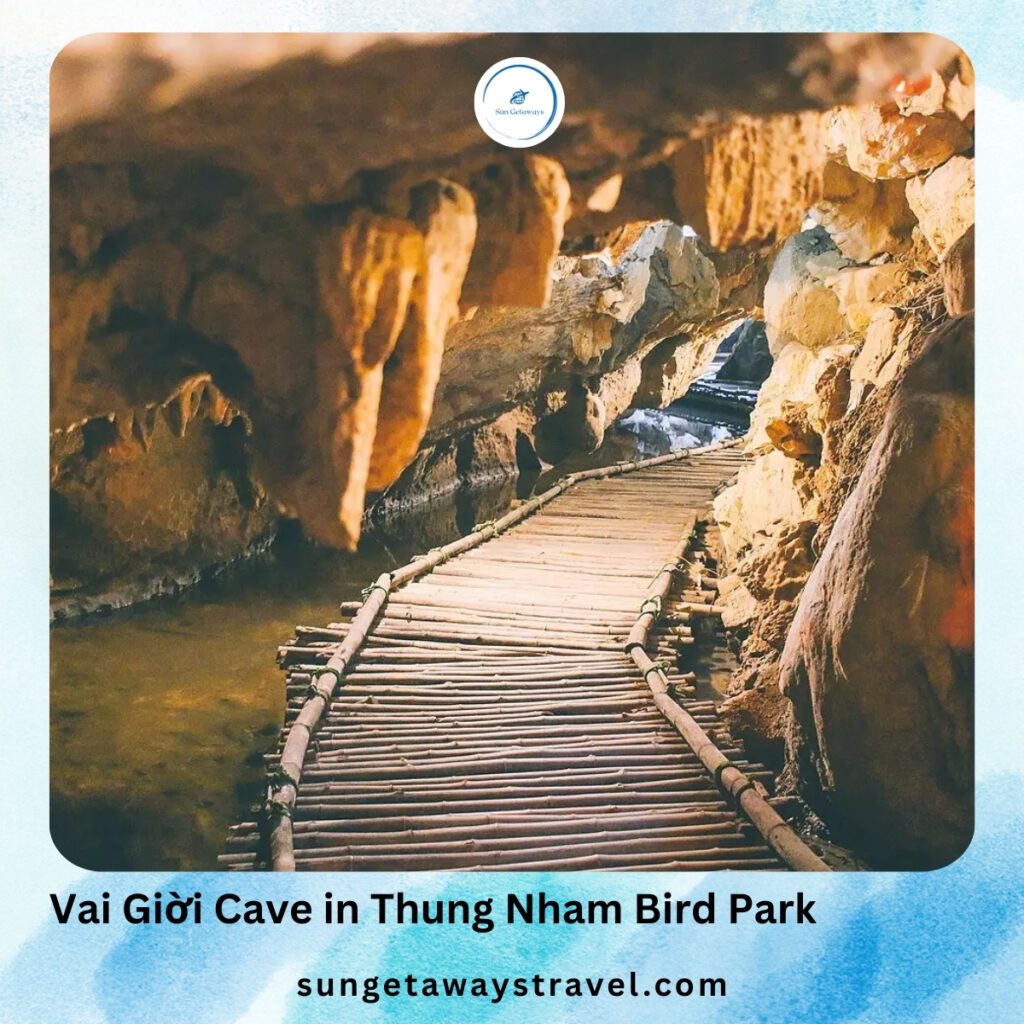

- Mermaid (Tien Ca) Cave: Mermaid Cave winds through narrow, twisting passageways, where stalactites take on mythical shapes—dragons coiled in motion, fish leaping from stone, and waves frozen mid-surge. The cave’s enchanting formations stir the imagination, making it easy to believe that mermaids once danced through its watery corridors.
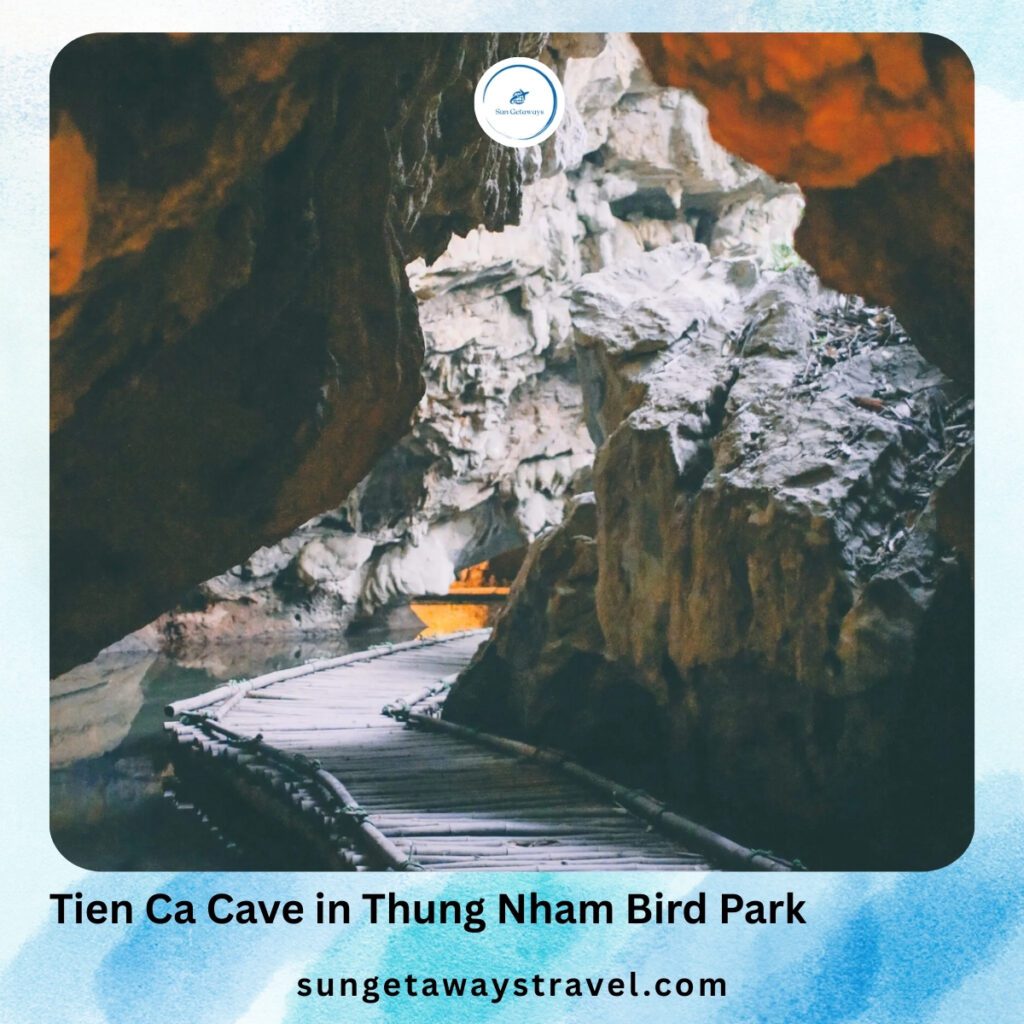

These caves are not merely natural wonders but cultural symbols, often associated with legends of deities, fertility rituals, and village offerings.
Biodiversity and Bird Life in Thung Nham Bird Park
What distinguishes Thung Nham Bird Park is its avian community. Over 40 species thrive here, with tens of thousands of individuals recorded during peak seasons. Cormorants, herons, storks, and egrets dominate the flooded forest, while rare species such as flamingos and spoonbills occasionally appear. Many of these birds are listed in Vietnam’s Red Book of endangered species, making the park a vital conservation site.
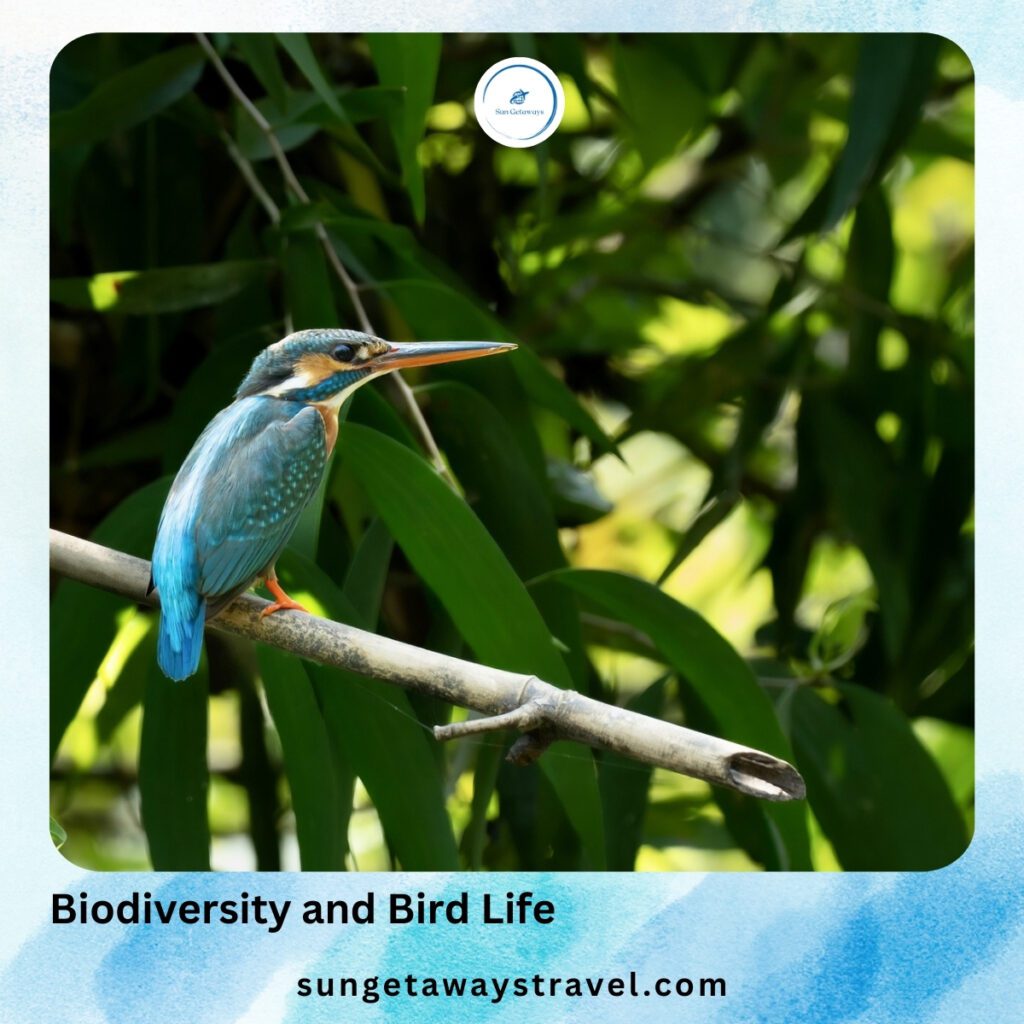

Birds have spiritual significance in local culture: their return at dusk is seen as a symbol of harmony between heaven and earth. Villagers once considered roosting patterns as omens for farming and fishing, integrating ecology into cosmology.
Things to see at Thung Nham Bird Park
Bird-Watching & Roosting Spectacle
Around 5 PM, as the sunlight begins to soften, visitors can witness one of the most breathtaking things to see at Thung Nham Bird Park: thousands of storks, herons, and egrets soaring across the sky before settling into the dense treetops. The sound of birds calling to each other echoes through the flooded forest, creating a vibrant symphony of nature. It’s a moment where time seems to pause, leaving only the rhythm of wings and the whisper of wind through leaves. With over 40 bird species, including rare ones, Thung Nham is a paradise for bird-watching enthusiasts.
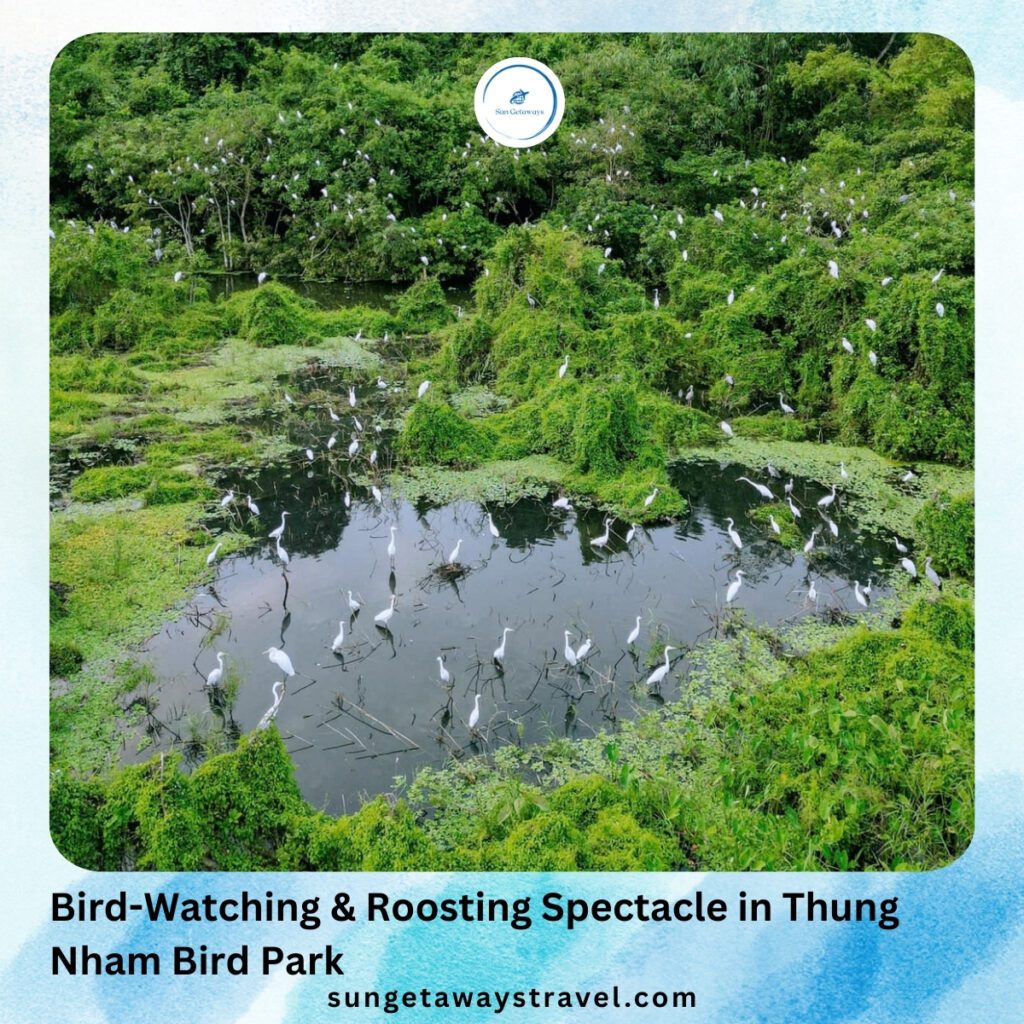

The best time to visit this ecological bird park for bird-watching is early morning (5–7 AM) or late afternoon (5–6 PM), when bird activity peaks. In the morning, flocks take flight over misty lakes, filling the air with energy. At dusk, the golden sunset highlights the white plumage of returning birds. Visitors are encouraged to bring binoculars and zoom lenses to capture these rare moments. This experience is not just about watching birds—it’s about feeling the pulse of Vietnam’s natural life.
Want to experience the breathtaking bird flocks at Thung Nham Bird Park? Discover more on our Thung Nham Ninh Binh Eco Tourism guide for tips, best visiting times, and wildlife insights.
Cave Exploration: Bụt Cave, Vai Gioi, Tien Ca
Bụt Cave is one of the most intriguing things to see at Thung Nham Bird Park. Inside, a crystal-clear lake reflects light from crevices in the rock, creating a magical atmosphere. Vai Gioi Cave challenges visitors with 400 stone steps leading to a panoramic view of the forest. Mermaid Cave (Tien Ca) offers a mysterious vibe with its darkness and underground stream winding through the earth. Each cave features unique stalactites and legends passed down through generations.


Locals believe these caves were once sacred pilgrimage sites used to pray for rain and good harvests. Bụt Cave is considered a spiritual place, where a stalactite resembles a Buddha figure. Vai Gioi Cave was where villagers climbed to seek divine blessings, reflecting their deep connection to nature and the spiritual world. Tales of a mermaid in Tien Ca Cave add a layer of folklore to the adventure. The best time to visit Thung Nham Bird Park for cave exploration is during dry months, when paths are safe and visibility is high.
Ready to uncover the magic of Ninh Bình beyond Thung Nham? Combine your visit to the serene bird sanctuary with a full-day adventure through Bai Dinh Pagoda, Trang An’s majestic waterways, and the panoramic views from Mua Cave. Discover the soul of Vietnam’s natural and cultural heritage — all in one unforgettable journey.
👉 Don’t miss the chance to explore Ninh Bình’s stunning landscapes, cultural treasures, and serene bird sanctuaries — book your full-day Ninh Binh tour now for an unforgettable adventure!
The Ancient Banyan Tree & Spiritual Sites
The thousand-year-old banyan tree at this ecological bird park stands as a living symbol of time. Its wide canopy shades a large courtyard, and its intertwined roots form natural pillars. Visitors often sit beneath it to meditate, rest, or take photos. On sunny days, it offers a cool retreat surrounded by birdsong and rustling leaves. This tree is more than a botanical marvel—it’s a witness to the rhythms of village life.
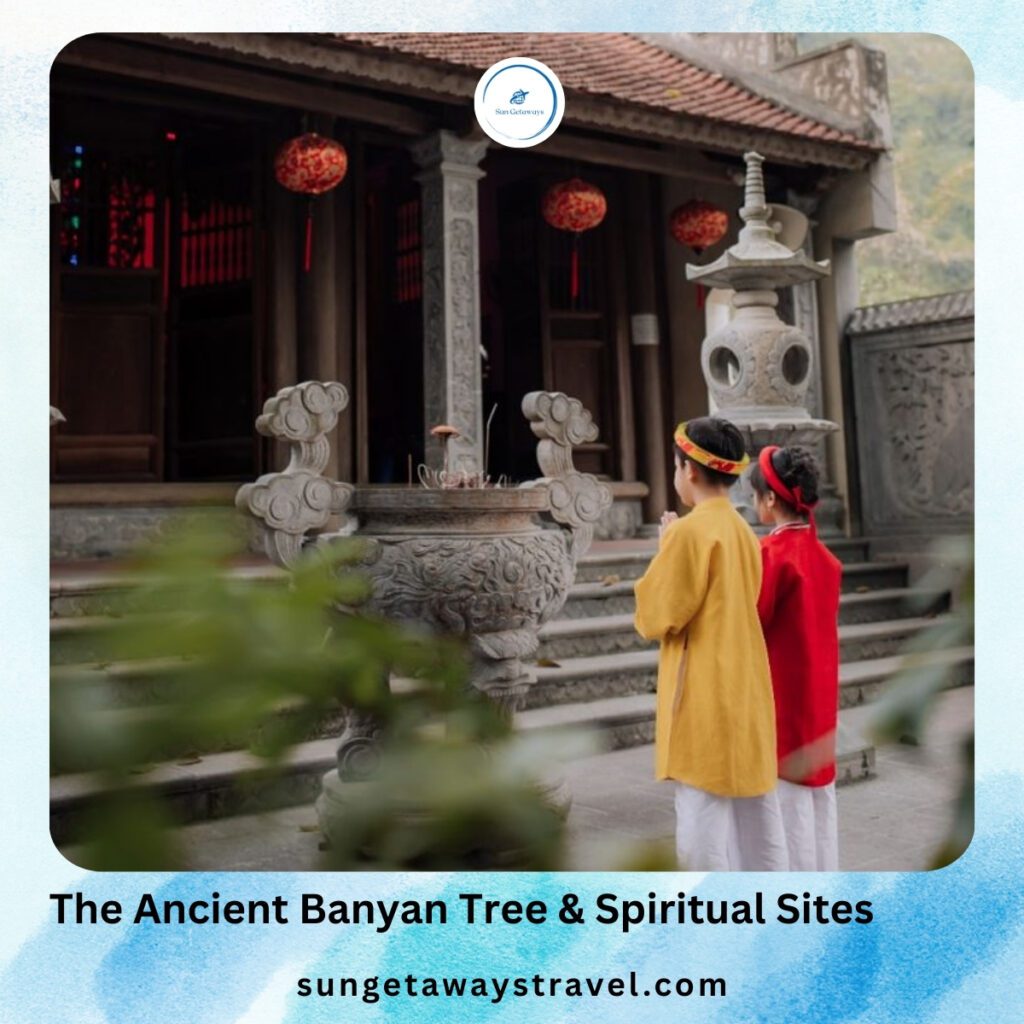

Nearby are small temples and shrines like Gối Đại Pagoda and Linh Thần Shrine, which are among the most meaningful things to see at Thung Nham Bird Park. These spiritual sites are built modestly, blending seamlessly with the limestone cliffs and forest. International visitors are often captivated by the harmony between local beliefs and untouched nature. It’s an ideal place to learn about Vietnam’s spiritual traditions in a countryside setting. The best time to visit Thung Nham Bird Park for spiritual reflection is early morning, when the area is quiet and serene.
Vegetation, Flower Gardens & Orchards
Among the most refreshing things to see are its lush fruit orchards, where mangoes, lychees, guavas, and jackfruit grow in abundance. Visitors can stroll through these gardens, admire the seasonal fruits, and even taste them during harvest time. The air is fragrant with the scent of ripe produce, and colorful flower beds add charm to the landscape. It’s a sensory delight that blends nature’s bounty with rural beauty.
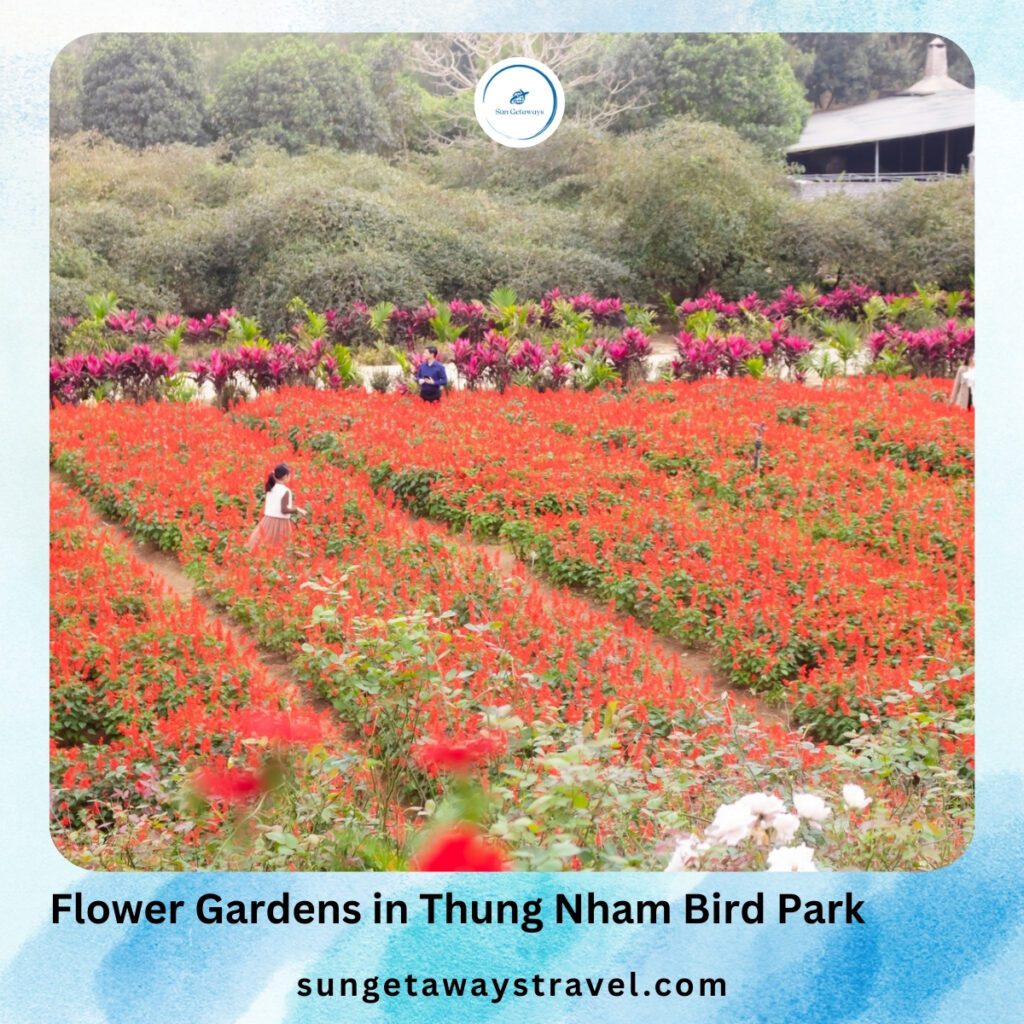

The park also preserves ancient trees, bamboo groves, and patches of primeval forest that support the local ecosystem. Shade trees, climbing vines, and native plants create a layered habitat ideal for bird nesting and feeding. This botanical diversity is not only beautiful but essential to the park’s ecological balance. For lovers, the best time to visit Thung Nham Bird Park is during spring and early summer, when flowers bloom and fruit trees flourish. It’s a perfect moment to witness nature’s renewal.
👉 If you’re a foreign visitor who’s never been to Thung Nham, check out these essential tips to make the most of your experience — from what to wear to how to stay connected.
Trails, Boat Rides & Local Interactions
One of the most immersive things to see at Thung Nham Bird Park is its network of forest trails and bamboo bridges. These paths wind through shaded groves, offering cool air and the soothing sounds of nature. Walking here feels like entering a hidden world, where every step reveals a new perspective of the countryside. The wooden bridges and quiet streams add a poetic touch to the journey.


Visitors can also enjoy hand-rowed boat rides through shallow waters, passing orchards and bird zones. From the boat, you’ll see birds flying overhead and hear their calls echoing across the water. Local guides often share stories about the land, adding cultural depth to the experience. The best time to visit Thung Nham Bird Park for boating is early morning, when the water is calm and the birds are most active. It’s a peaceful way to connect with both nature and the people who care for it.
Signature Natural Scene
The sunset at this nature-based bird sanctuary is a masterpiece of light and movement. As the sun dips behind limestone peaks, its golden rays reflect off the lake, illuminating flocks of birds returning to their nests. Mist drifts down from the hills, cloaking the forest in a soft veil. This tranquil scene is one of the most unforgettable things to see at Thung Nham Bird Park , especially for photographers and nature lovers.
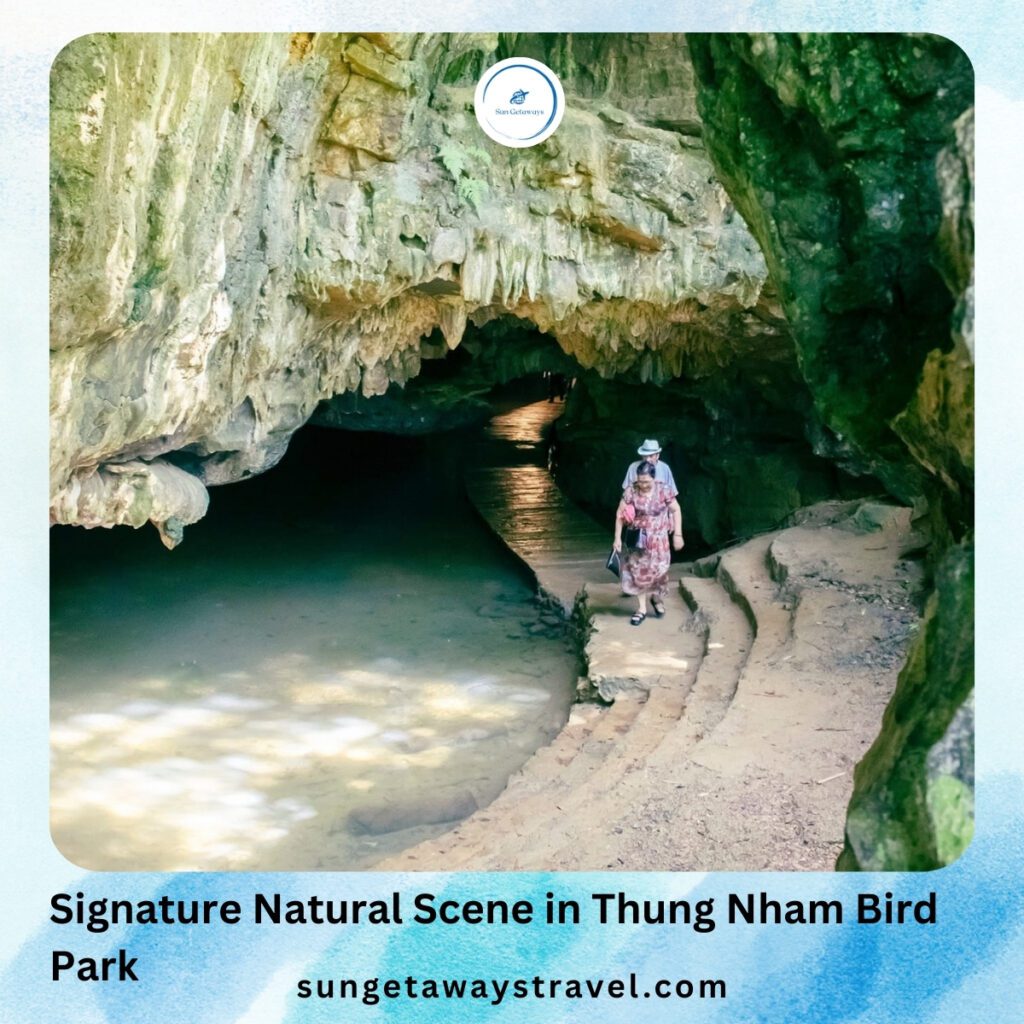

At dawn, the park awakens with gentle light filtering through the trees and into the caves. Birds take flight in the crisp morning air, and the sound of trickling water adds to the serene atmosphere. The best time to visit Thung Nham Bird Park for sunrise views is between 5 and 6 AM, when the mist is still rising and the forest glows with new light. It’s a moment of quiet magic that stays with you long after you leave.
👉 Want a deeper dive into Thung Nham Bird Park’s activities, homstay,..- all tailored to your interests? Customize your experience via Sun Getaways Travel
The Best Time to Visit Thung Nham Bird Park & International Perspective
Thung Nham Bird Park offers a rich tapestry of seasonal experiences, each revealing a different side of Vietnam’s countryside heritage. Whether you’re drawn to the dramatic bird migrations, the serenity of misty mornings, or the vibrant orchards in bloom, timing your visit is key to unlocking the most memorable moments. The best time to visit this destination depends on what you want to see — from thousands of birds returning to nest, to spiritual sites bathed in golden light. This section explores the seasonal highlights and helps you plan your journey around the most rewarding things to see at Thung Nham Bird Park.
👉 Stay connected while exploring Ninh Bình! Grab a 1-day 5G SIM or eSIM to check the weather, navigate easily, and share your journey in real time. Get your Vietnam travel eSIM here
August – October: Autumn Bird Migration Season
From August to October, this scenic bird reserve transforms into a sanctuary of movement and sound. This is the peak season for migratory birds, when tens of thousands of storks, herons, and egrets return to nest in the flooded forest. At sunset, the sky fills with wings and the treetops come alive with bird calls — one of the most spectacular things to see at Thung Nham Bird Park . The limestone cliffs and wetlands shimmer in the golden light, offering unmatched opportunities for photography and bird-watching.


The weather is cool and dry, making it ideal for walking trails, boat rides, and cave exploration. Local guides often share stories about the birds’ seasonal rhythms and the park’s conservation efforts. For nature lovers and photographers, this is undeniably the best time to visit this scenic bird reserve. It’s a season of energy, color, and ecological wonder.
January – March: Spring Serenity & Cave Exploration
Early spring, from January to March, brings a calm yet vibrant atmosphere to this well-known eco-tourism destination. Bird activity remains high, especially in the early morning when mist rises from the lake and birds take flight. The caves — But Cave, Vai Gioi, and Mermaid Cave — are dry and accessible, revealing their full beauty without slippery paths or flooding. These geological wonders are among the most fascinating things to see at Thung Nham Bird Park.


The skies are clear, the air is crisp, and the forest is peaceful — perfect for meditation, photography, and quiet reflection. Visitors can enjoy shaded trails, spiritual sites, and the soothing sounds of nature. If you’re looking for a tranquil yet immersive experience, this is the best time to visit this place. It’s a season that invites you to slow down and connect deeply with the land.
April – July: Orchard Season & Floral Beauty
Between April and July, this bird sanctuary nestled in nature bursts into bloom. Fruit orchards — mango, lychee, guava, jackfruit — fill the air with sweet aromas, and flower gardens explode with color. Walking through these vibrant landscapes is one of the most refreshing things to see at Thung Nham Bird Park. Visitors can taste fresh fruit, take photos among the blossoms, and enjoy the shade of ancient trees.
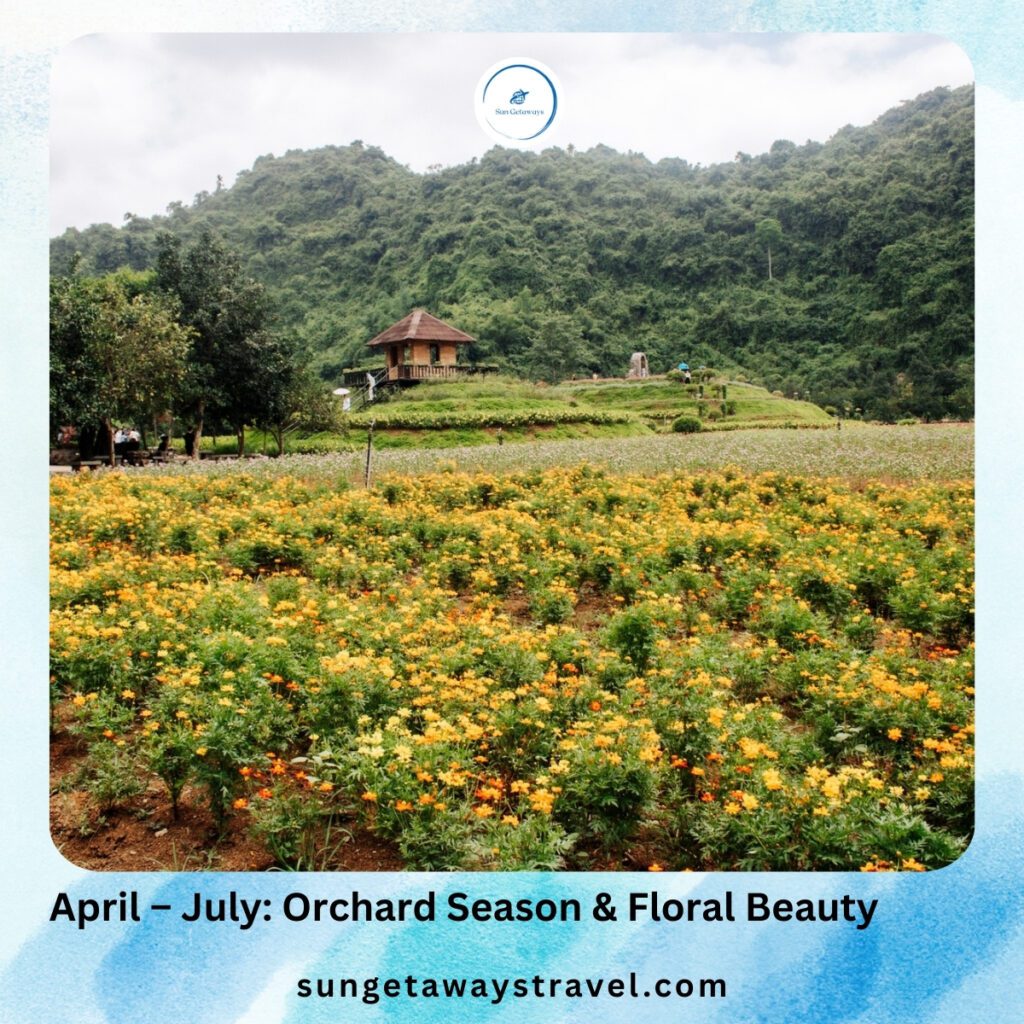

Though bird activity is lower than in peak seasons, the park is quieter and more relaxed. Trails are cool and uncrowded, and boat rides offer peaceful views of the water and forest. For those who prefer a slower pace and botanical beauty, this is still a good time to visit. It may not be the absolute best time to visit this nature-based bird sanctuary, but it offers a unique charm all its own.
👉 If you’re craving the most down-to-earth, local-style tour — one that skips the crowds and dives deep into Ninh Bình’s authentic charm — this is it. Explore it your way
November – December: Spiritual Calm & Misty Landscapes
Late in the year, from November to December, this tranquil bird-watching destination takes on a quiet, contemplative mood. Morning mist drapes the forest, and spiritual sites like the thousand-year-old banyan tree and Linh Thần Shrine feel especially serene. These sacred places, nestled among limestone cliffs, are deeply tied to local beliefs — and among the most meaningful things to see at this destination.
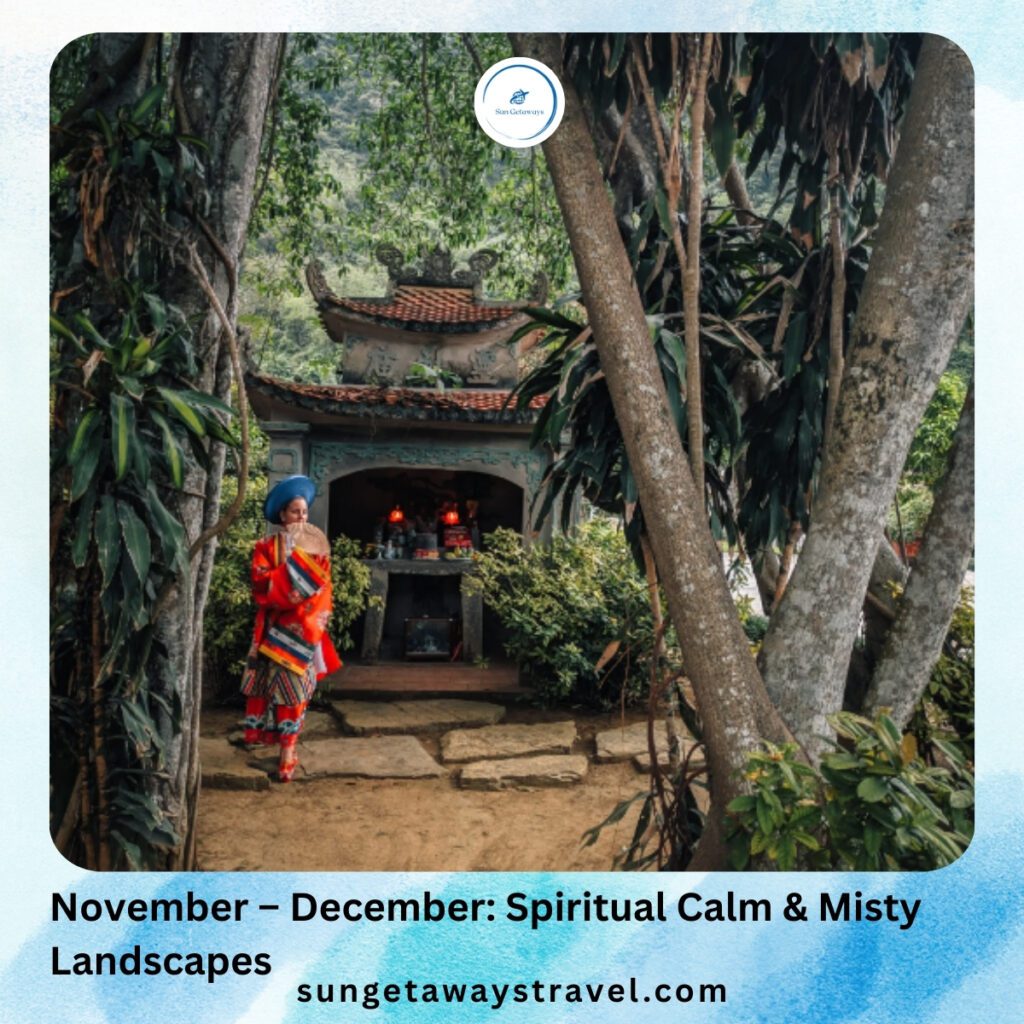

While bird activity slows, the lighting for sunrise and sunset photography is exceptional. Fewer tourists mean more space for reflection, meditation, and cultural immersion. If you’re seeking solitude and spiritual depth, this is a peaceful time to visit. It’s not the best time to Thung Nham Bird Park for bird-watching, but it’s ideal for those who value quiet beauty and cultural connection.
Summary Table — Best Time to Visit Thung Nham Bird Park
| Month / Season | Why It’s the Best Time | Visitor Experience Highlights |
| August – October (Autumn) | Peak bird migration; thousands of birds return to nest. | Dramatic bird-watching; golden sunsets; cool weather. |
| January – March (Spring) | High bird activity; dry weather ideal for cave and trail exploration. | Misty mornings; accessible caves; peaceful forest walks. |
| April – July (Early Summer) | Orchards in bloom; flower gardens at their most colorful. | Fruit tasting; vibrant landscapes; relaxed atmosphere. |
| November – December | Spiritual calm; ideal lighting for sunrise and sunset. | Quiet trails; cultural immersion; contemplative natural scenes. |
👉 Curious about more unique experiences? Browse our full collection of experiences. There’s something for every kind of traveler!
Conclusion
Thung Nham Bird Park is not just a bird sanctuary but a cultural landscape where myths, traditions, and ecosystems converge. From caves that tell legends to orchards that feed families, from flocks of herons to ancient banyan roots, it represents the living heart of the Vietnam countryside.
As one of the best countryside destinations in Vietnam, it reveals both biodiversity and human heritage, offering travelers not only scenery but also understanding. To witness the roosting of birds, walk beneath sacred trees, and share food with villagers is to step into village life in Vietnam in its purest form.
Ask a question
Leave a Comment (0)
No questions yet. Be the first to ask a question!





